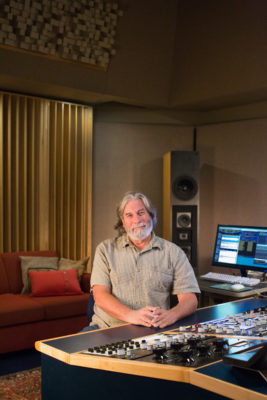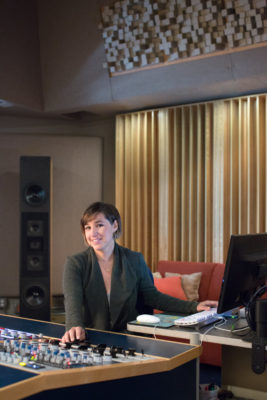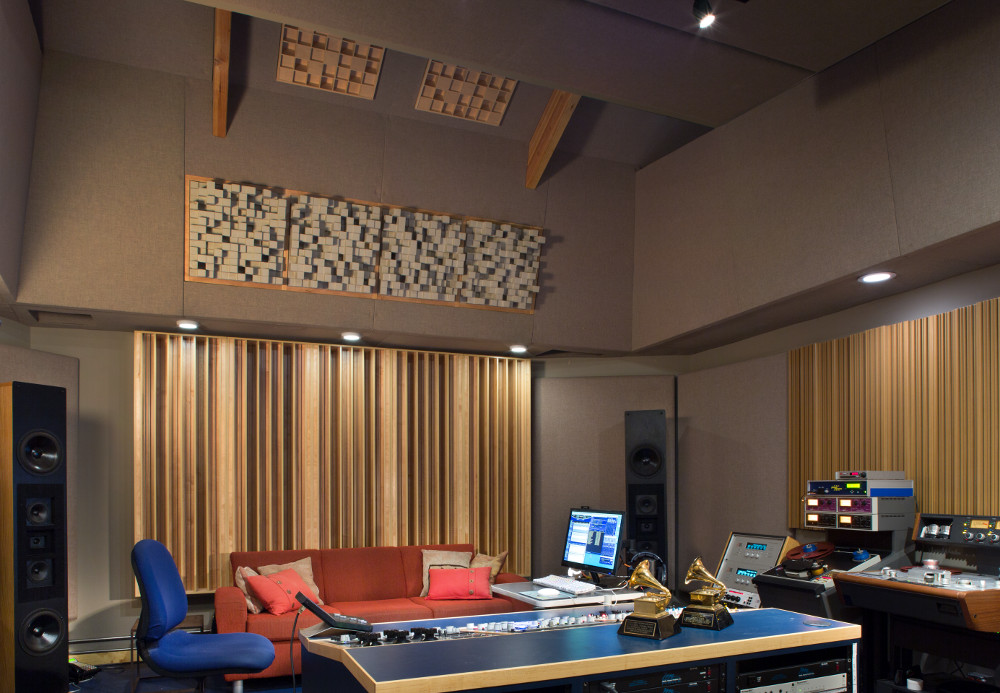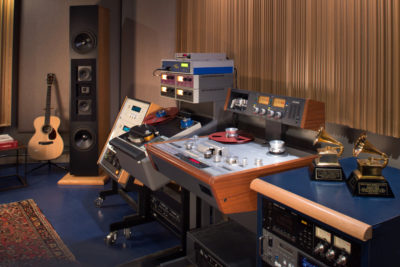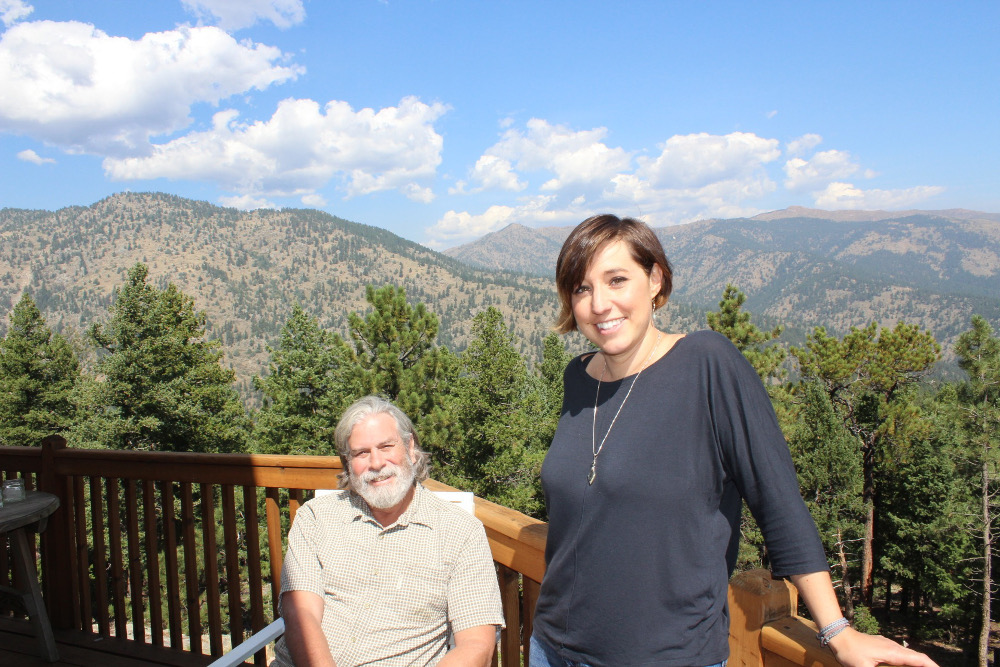Master Plan: Airshow Mastering – Boulder, CO
Is happiness your thing? Then Boulder beckons.
This Colorado town perched 5,430 feet above sea level has firmly established its reputation for all-around awesomeness. Accolades abound for the mountain municipality 25 miles northwest of Denver, including a #1 ranking on the Moneywatch list of “10 Happiest Cities,” #1 on Portfolio’s “Top Brainiest Cities” list, tops on Forbes’ “America’s Top 25 Cities to Live Well”…and on and on. Are you a backpacker? A foodie? LGBT? Boulder is da best.
David Glasser, founder of Airshow Mastering, has been big on Boulder for a long time. He first opened a mastering complex there in 1997, and is clearly hooked on this part of the country with the unveiling of an all-new Airshow in the Boulder foothills. Gone is the industrial park home of old, replaced by a bucolic new setting five miles west of the city.
Airshow did more than just improve the view, however. Glasser, mastering engineer Anna Frick and their discerning clientele now benefit from even more accurate critical listening environments, capable of stereo and 5.1 surround mastering, lock to picture, SACD/DSD mastering and authoring, and Plangent Processes analog tape transfer services.
The business’ history actually dates all the way back to 1983, launched by Glasser in Virginia (a Tacoma Park, MD location helmed by Charlie Pilzer is also in operation). Along the way, this mastering mind has kept ahead with a strong record of early adoption in the digital realm, while developing a devoted following in the Americana, jazz, bluegrass and rock verticals that include The Grateful Dead, Rusted Root, Breaking Benjamin, Colin Hay, Sweet Honey in the Rock, and countless others. Need a massive box set mastered? We’re talking 80 CD’s here. Airshow is uniquely qualified to master for the long haul.
Designed by Sam Berkow of SIA Acoustics, constructing the new facility was no walk in the proverbial park due to Boulder’s extremely stringent building codes. And while advancing critical listening was paramount, Airshow’s new layout also reflects an evolved music industry with a more compact footprint and increased efficiency.
How do you advance your craft, while “returning to the roots” at the same time? Airshow shows you how, via the insights of David Glasser and Anna Frick in our latest “Master Plan.”
Facility Name: Airshow Mastering
Website: airshowmastering.com
Location: Boulder, CO
Clients/Credits: Grateful Dead, The Rise & Fall of Paramount Records (Vol 1 & 2), Earls of Leicester, Billy Strings, Plvnet, Ralph Stanley, Del McCoury, Tim Reynolds, Gregory Alan Isakov, The Subdudes
The Latest:
Jono Manson: The Slight Variations
Charito – American Gold Standards http://www.charito.com/discography/
Key Personnel: David Glasser – Mastering Engineer; Anna Frick – Mastering & Restoration Engineer; Ann Blonston – General Manager
When it All Began:
DG: I started Airshow in 1983 when I was recording a lot of live events and concerts for radio broadcast (shows on the air – now you know). The mastering component grew out of our use of early digital technology like the Sony F1 and early Digidesign products, which enabled us to offer mastering services in the early years of the compact disc. We soon acquired a Sony PCM-1630 system and Sonic Solutions workstations.
Master Mind
DG: I worked at NPR for eight years doing a lot of concert recording and broadcast production – all stereo, very few multitrack sessions – and that honed the skills and mindset necessary for the mastering work I’ve been doing for the past 26 years: making a finished recording sound as good as possible, and translate to a wide range of listening environments.
My approach, which I’d imagine is common among mastering engineers, is to let the music dictate the direction to take. In some cases, that means tread lightly; in others, be imaginative and creative.
That said, the projects that seem to get the most notice are natural and organic – singer/songwriters, a lot of terrific new acoustic and bluegrass music, jazz, and rock. In the ‘80s and ‘90s I recorded hundreds of concerts and events, and frankly, the hours I can keep as a mastering engineer are much nicer!
AF: I first got into mastering when I started at Airshow seven years ago as the assistant engineer. That was where I jumped in with both feet.
Working with Dave and having my ear on every project that went out the door is what gave me the ear training and skills to move into mastering my own projects. When I first started mastering, I’d hear something on one of Dave’s projects and then try to replicate it myself. Then Dave and I would listen to his version and mine and we’d talk about it. That kind of experience and feedback have been crucial to my development as an engineer.
From that experience I’ve come to a philosophy of conversation about a project – what are we aiming at? It’s both intuitive and technical, and I love that because it engages both sides of my brain.
At the end of the day, I love being involved in the finale of an album – hearing it all come together in its final form – that is what keeps me coming back.
Big on Boulder:
DG: The new studio building is located on my property in the Boulder foothills where I’ve lived for the past 19 years. It’s isolated, peaceful, and quiet, with great views over Left Hand Canyon. The commute is pretty good, too.
We had been leasing space in town; we own the new building. The location is close enough to town for frequent attended sessions. We think that clients will enjoy visiting.
For unattended sessions, location is unimportant, but a Boulder, CO address comes with a certain cachet.
AF: I think one of the greatest things about the new location is that when I need an ear break, I step outside into a nice quiet forest. I mean, really: what’s better than that?
New Location, New Facility:
DG: Essentially, we were returning to the roots of our mastering business, when I stopped doing remote recording and concentrated almost exclusively on mastering.
The priorities were a smaller, decentralized staff, a much nicer location in the middle of the woods, and lower overhead. We achieved these goals. In our previous location we had a 4000 sq. ft. facility with a half dozen engineers and support staff. That model worked well at the time, but in the 2016 music biz, I didn’t think it was sustainable. I also wanted to focus more on my craft and less on management.
AF: For me, it means I get to focus more on mastering. I was still filling the role of assistant engineer at the old location, supporting all of the engineers, and also dealing with all of the technical upkeep of both the studios and the office. That, in addition to taking on my own mastering clientele was stressful.
Now Dave and I get to focus on mastering. It’s also put us more in touch with our clients. We’re each handling our projects start to finish – from answering the phone, all the way through getting the master out the door.
My Designer:
DG: Sam has been a dear friend for a long time, and I’ve learned a great deal about acoustics from him.
My request for the new studio was “make it like my old studio, but better!” He designed my previous mastering studio and I was happy with, and used to the sound, the equipment complement, and the layout. I wanted to duplicate that as much as possible.
On a trip with Sam to the Telluride Bluegrass Festival a couple summers ago, he stayed up late one evening, and when I came down for breakfast he pointed to his computer and said “Here is your new studio.” The design changed very little from that initial concept, and it incorporated several changes from the previous room: more bass trapping in soffits around the room and above the ceiling, and more diffusion on the rear and side walls.
The new room, though slightly smaller than the old, has a tighter, smoother low end response, greater clarity, and at the same time, it sounded very familiar when we first fired up the monitors.
Accuracy Above All – How the New Airshow Suites Achieved Maximum Accuracy:
DG: Infrastructure: Acoustic design, by Sam Berkow. Solid construction. Equi=Tech balanced power system, with power fed directly from the utility transformer. Proper audio wiring and grounding.
The Sound of Surround:
DG: The surround work we’re doing is largely for concert video films, such as the recent Grateful Dead Fare Thee Well Blu-ray release and the annual Grateful Dead “Meetup At The Movies” Fathom events.
We’re equipped to master for surround using an all-digital workflow, or using 6-channel analog processing through our Maselec MTC-6 Transfer Console. We use Pro Tools for video work since it’s so easy to integrate HD video with multi-channel audio. Compared to stereo, everything is multiplied: more A/D and D/A channels – we use Prism & Mytek converters; obviously more digital and analog outboard gear – the Z-Systems and tc6000 processors are indispensable; expanded metering; and of course, the monitor system. We designed the room for surround monitoring.
Artists and producers should understand that music-centric video projects, especially surround projects, need professional mastering as much as stereo projects do. Too often it’s overlooked, and I’d like to change that.
Rocky Mountain (Not) High:
DG: Boulder County is notorious for strict zoning and building codes. To pull our permit, we had to account for projected energy use and efficiency, and wildfire risk reduction: We took down about 30 trees, and created the required defensible space around the structure. We followed all of the rules and guidelines, and the permit and inspection process went very smoothly.
The studio is built into a fairly steep slope, so that required more involved structural engineering, excavating, and construction planning. Building in the foothills, outside of an urban area automatically adds some cost to the construction.
We chose SIPS (Structural Integrated Panel) construction, which brought two benefits to our process: First, it’s energy-efficient, which enabled us to easily meet Boulder County’s standards. Second, with no interior supports, we were able to design the rooms just as we wanted them.
Top Gear:
DG: The room is the most important component. The infrastructure is important: clean, reliable power; HVAC; grounding; etc.
Our Maselec MTC-6 Surround Transfer and Monitoring console is a great piece that allows for seamless and efficient insert routing, level control, and transparent monitoring. It’s been very reliable and has the needed headroom. I’ve been using Pacific Microsonics and Prism converters for many years and am so used to their sound that I consider them essential. And I’m a Sonic Studio soundBlade user, and prior to that I used Sonic Solutions going back 26 years.
For my mastering workflow it works very well. I was brought up in the age of analog tape, and I enjoy working with tape. Our Ampex ATR-104 was beautifully restored by Mike Spitz, and features several custom mods, including the excellent Plangent Processes replay electronics and heads. Along with our Studio A820, we can properly play back any ¼” or ½” tape format with a choice of heads and electronics.
For processing, I’ve used nearly the same setup for a while: EQs from Pultec, Prism, API, Weiss & Z-Sys; Compressors from Fairman, Maselec, API, SSL, & Weiss; TC6000; and a handful of plugins: Quartet, Ozone, RX, and Sonnox limiter. I spend the first part of a session trying different approaches and narrowing the range of gear I have to use to the minimum.
AF: We use Dunlavy monitors – V’s for stereo, then IV’s for center, left surround & right surround. Our subs are Paradigm Servo-15’s, amp is Ayre V-6xe.
Dave has been using the Dunlavys for years and I’ve found that they’re transparent and give the clarity I need to identify and address any issues in the mix. That transparency is critical to allowing my work to translate to all the different systems where fans listen.
Off Duty:
DG: My tastes are pretty eclectic. I see a lot of live music – Boulder and environs have a vibrant music scene, and the festivals in Colorado are some of the best. Not to mention Red Rocks. I listen to a lot of jazz, classic country, bluegrass, & jammy world music, and tend to binge listen: I’m a fan of comprehensive box sets, and I love music that is well recorded.
AF: Yeah, like Dave said, we’ve got a really great music scene in Colorado. In fact, Dave and I originally met through the bluegrass festivals around here. I also go to a lot of live shows – they’re my vacation from the studio environment.
I tend to listen to vinyl at home because I appreciate the attention that it requires. As far as types of music go, it’s all over the map. A lot of bluegrass, folk, and rock and the intersections of all of those. I love a well-written song.
Unforgettable Projects:
AF: There are a couple that really stand out. First is the “Rise & Fall of Paramount Records.” The quality of the source materials ran the gamut. And at the same time, we were listening to the history of the blues unfold as we worked. That’s a set that everyone needs to check out – it’s such a great story and the music lays the groundwork for so much of what we hear today.
The other one that stands out is Billy Strings’ and Don Julin’s record “Fiddle Tune X.” Don said to me, “Hey, this was recorded everywhere: at our live shows, in a barn, in the studio, a house concert in the middle of Manhattan, just everywhere – good luck!” It was so much fun to try to pull it all together into some sort of a cohesive record.
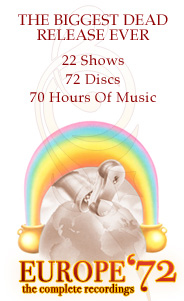
It takes a special mastering engineer to a) be selected by the Grateful Dead, and b) finish 72 discs worth of material.
DG: Hard to pick just one. I particularly enjoy working on box set projects. I was so pleased to work with Jeffrey Norman and producer David Lemieux on the Grateful Dead’s Complete Europe ’72 box set (72 CDs), and the 30 Trips Around the Sun career-spanning box (80 CDs).
With large projects like these – and the recent “Rise and Fall of Paramount Records” sets for Third Man and Revenant Records – the deadlines are measured in months, not days, so the stress factor is less, and you can immerse yourself in the work and the music. I’ve also enjoyed working on albums and with artists who influenced me in many ways: Jorma Kaukonen, the Grateful Dead studio album remasters, Pete Seeger, Doc Watson, Ralph Stanley.
What I Wish Everyone Understood About Mastering:
AF: We’re the bridge between all the work you’ve put in in the studio and the way your fans hear your music. And we’ve got a wealth of knowledge to offer. Everything from how to get your music onto Spotify to how loud should my record be to how does my record really sound next to others? Having a great mastering engineer in your corner is so much better than flying blind into the marketplace.
DG: It’s not optional! If you’ve made a sincere commitment and investment in your music, then you should endeavor to present it in the best possible light, and the mastering step is an important part of the process.
There are no secrets or mysteries to mastering, and it’s not a panacea. I would rather artists budget more time and/or money to properly track and mix than trying to correct un-fixable mistakes in the mastering session.
There are services we supply, outside of the mastering session itself that are important, and valuable to the client that many do not know about or appreciate: quality control is big. We are often the last humans to listen critically to the master, and we review every master that leaves our shop in order to catch any mistakes or problems with the audio, the physical media, and the metadata. We are often the conduit between the client and the pressing plant, download service or aggregator.
And, though we are not in the business of archiving our clients’ assets, we are frequently called upon to provide replacement or additional masters decades after the session.
Listen Better
AF: Listen everywhere, don’t let your project exist on an island. And don’t be afraid to ask for the ears of the experts (like a mastering engineer). Sitting down in a completely foreign listening environment with someone’s fresh ears on it will help.
Get feedback. Feedback makes all of us better engineers and artists, and we’re all in this together, right?
Bonus Track:
AF: Build mastering into your budget from the very beginning. It’s not something to skimp on. Why on earth would you put all this time and energy into getting everything perfect in recording and mixing and then drop the ball on the final product? It absolutely shouldn’t be an afterthought.
And get your mastering engineer involved before your mixes are done. We’ve heard a lot of bad mixes and a lot of really great mixes. Get our feedback, get fresh ears.
- David Glasser & Anna Frick, Airshow Mastering
Please note: When you buy products through links on this page, we may earn an affiliate commission.








